BUICK CENTURY 1993 Owners Manual
Manufacturer: BUICK, Model Year: 1993, Model line: CENTURY, Model: BUICK CENTURY 1993Pages: 324, PDF Size: 17.58 MB
Page 131 of 324
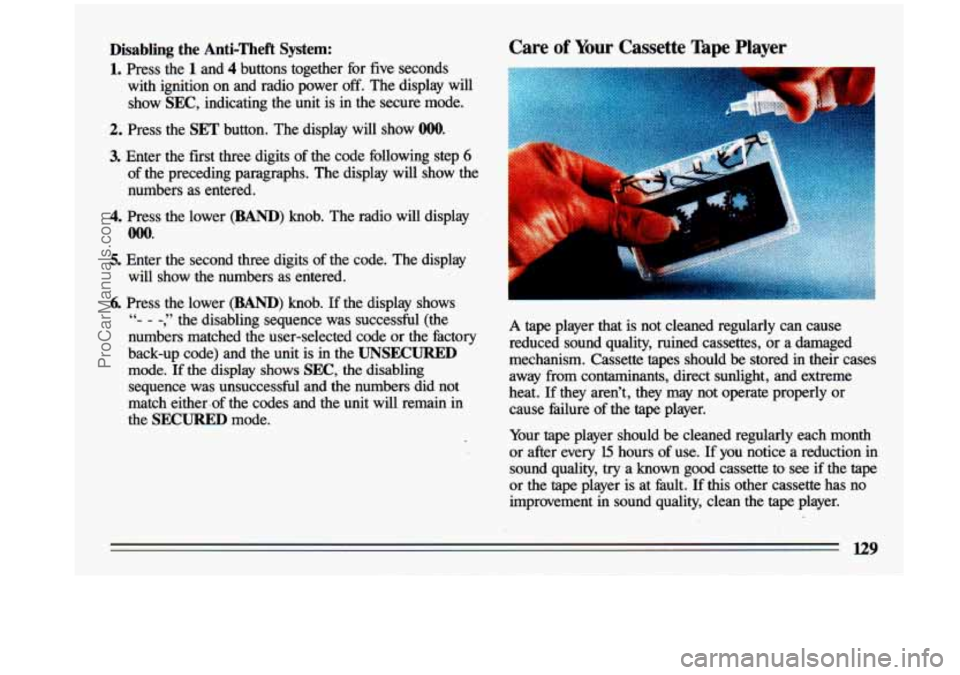
Disabling the Anti-Theft System:
1. Press the 1 and 4 buttons together for five seconds
with ignition on and radio power off. The display will
show
SEC, indicating the unit is in the secure mode.
2. Press the SET button. The display will show 0o0.
3. Enter the first three digits of the code following step 6
of the preceding paragraphs. The display will show the
numbers as entered.
4. Press the lower (BAND) knob. The radio will display
OOO.
5. Enter the second three digits of the code. The display
will show the numbers as entered.
6. Press the lower (BAND) knob. If the display shows
‘‘- - - ,” the disabling sequence was successful (the
numbers matched the user-selected code or the factory
back-up code) and the unit is in the
UNSECURED
mode. If the display shows SEC, the disabling
sequence was unsuccessful and the numbers did not
match either. of the codes and the unit will remain in
the
SECURED mode.
Care of Your Cassette Tape Player
A tape player that is not cleaned regularly can cause
reduced sound quality, ruined cassettes, or a damaged
mechanism. Cassette tapes should be stored
in their cases
away from contaminants, direct sunlight, and extreme
heat. If they aren’t, they may not operate properly or
cause failure
of the tape player.
Your tape player should be cleaned regularly each month or after every
15 hours of use. If you notice a reduction in
sound quality,
try a known good cassette to see if the tape
or the tape player is at fault. If this other cassette has n\
o
improvement in sound quality, clean the tape player.
1 /.Y
ProCarManuals.com
Page 132 of 324
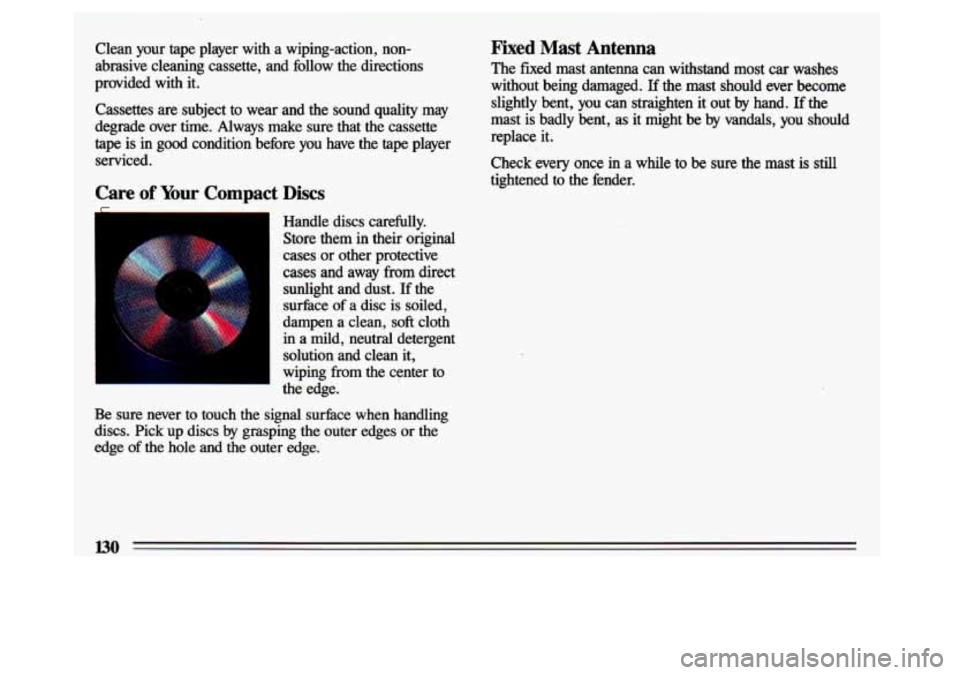
Clean your tape player with a wiping-action, non-
abrasive cleaning cassette, and follow the directions
provided with it.
Cassettes are subject to wear and the sound quality may
degrade over time. Always make sure that the cassette
tape is in good condition before you have the tape player
serviced.
Care of Your Compact Discs
Fixed Mast Antenna
The fixed mast antenna can withstand most car washes
without being damaged.
If the mast should ever become
slightly bent, you can straighten it out
by hand. If the
mast is badly bent, as it might be
by vandals, you should
replace it.
Check every once
in a while to be sure the mast is still
tightened to the fender.
Handle discs carefully. Store them
in their original
cases or other protective
cases and away from direct sunlight and dust. If the
surface of a disc is soiled,
dampen a clean,
soft cloth
in a mild, neutral detergent
solution and clean it,
wiping from the center to
the edge.
Be sure never to touch the signal surface when handling
discs. Pick up discs
by grasping the outer edges or the
edge of the hole
and the outer edge.
130
ProCarManuals.com
Page 133 of 324
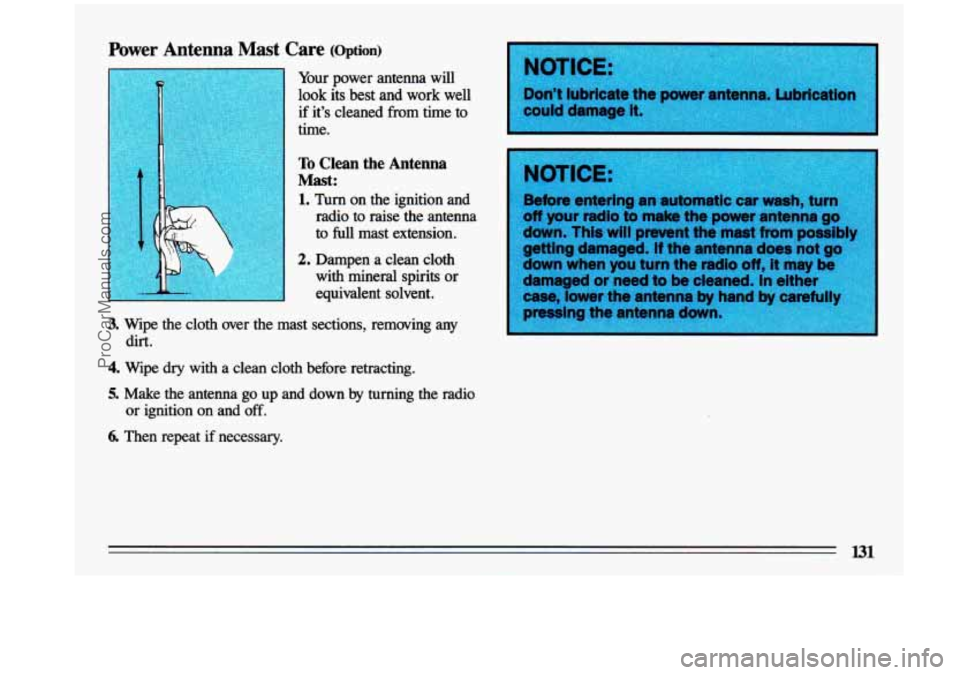
Power Antenna Mast Care (Option)
Your power antenna will
look its best and work well
if it’s cleaned from time to
time.
To Clean the Antenna
Mast:
1. Turn on the ignition and
radio to raise the antenna
to
full mast extension.
2. Dampen a clean cloth
with mineral spirits or
equivalent solvent.
3. Wipe the cloth over the mast sections, removing any
dirt.
4. Wipe dry with a clean cloth before retracting.
5. Make the antenna go up and down by turning the radio
or ignition
on and off.
r could damage i
6. Then repeat if necessary.
l31
ProCarManuals.com
Page 134 of 324
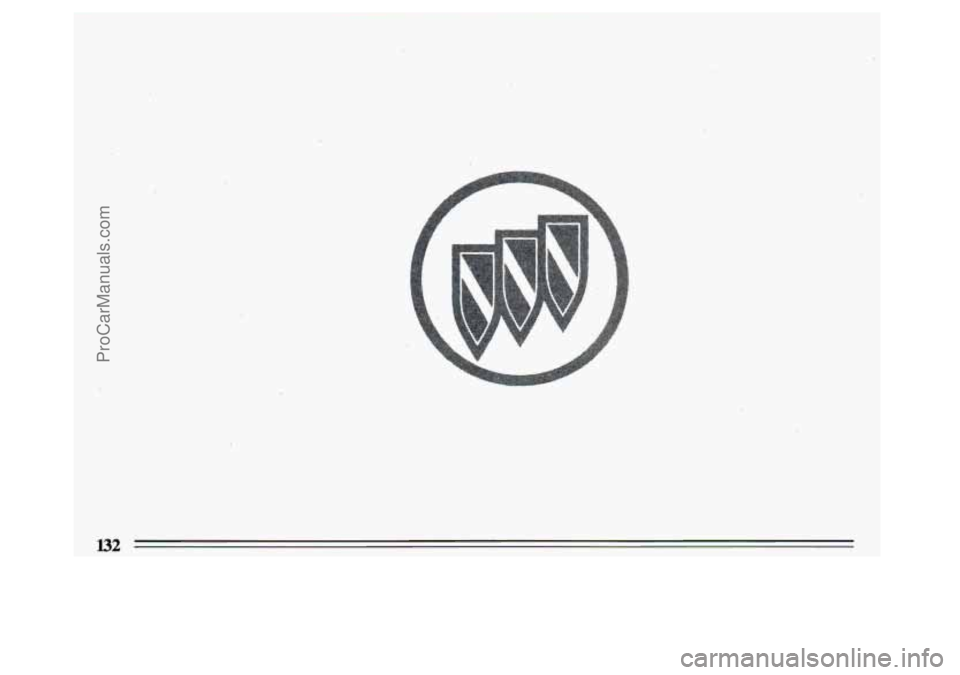
132
ProCarManuals.com
Page 135 of 324
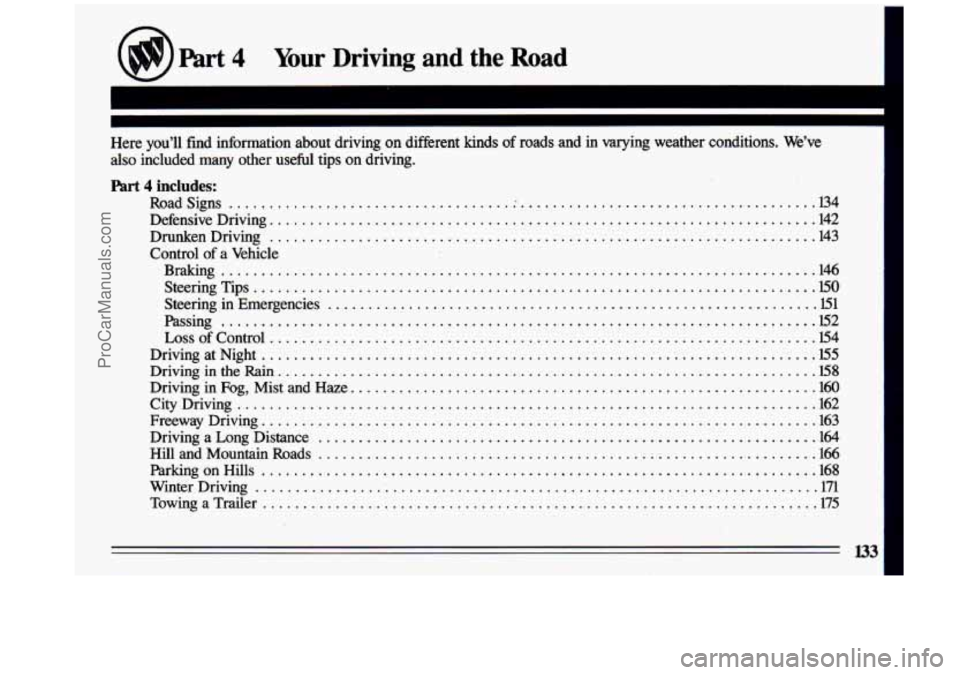
Part 4 Your Driving and the Road
~~ ~~~~ ~~ ~
Here you’ll find information about driving on different kinds of roads and in varying weather conditions . We’ve
also included many other useful tips on driving
.
Part 4 includes:
Roadsigns ........................................................................\
. 134
DefensiveDriving
.................................................................... 142
Control of a Vehicle
DrunkenDriving
.................................................................. 143
Braking
........................................................................\
.. 146
SteeringTips
...................................................................... ~0
Steering in Emergencies ............................................................. E1
Passing ........................................................................\
.. 152
LossofControl .................................................................... E4
DrivingatNight ..................................................................... E5
DrivingintheRain ................................................................... ~8
Driving in Fog, Mist and Haze .......................................................... 160
CityDriving ........................................................................\
162
FreewayDriving
..................................................................... 163
DrivingaLongDistance
.............................................................. 1~ .
HillandMountainRoads 166
ParkingonHills
..................................................................... 168
WinterDriving
...................................................................... 171
TowingaTrailer
..................................................................... 175
-
..............................................................
ProCarManuals.com
Page 136 of 324
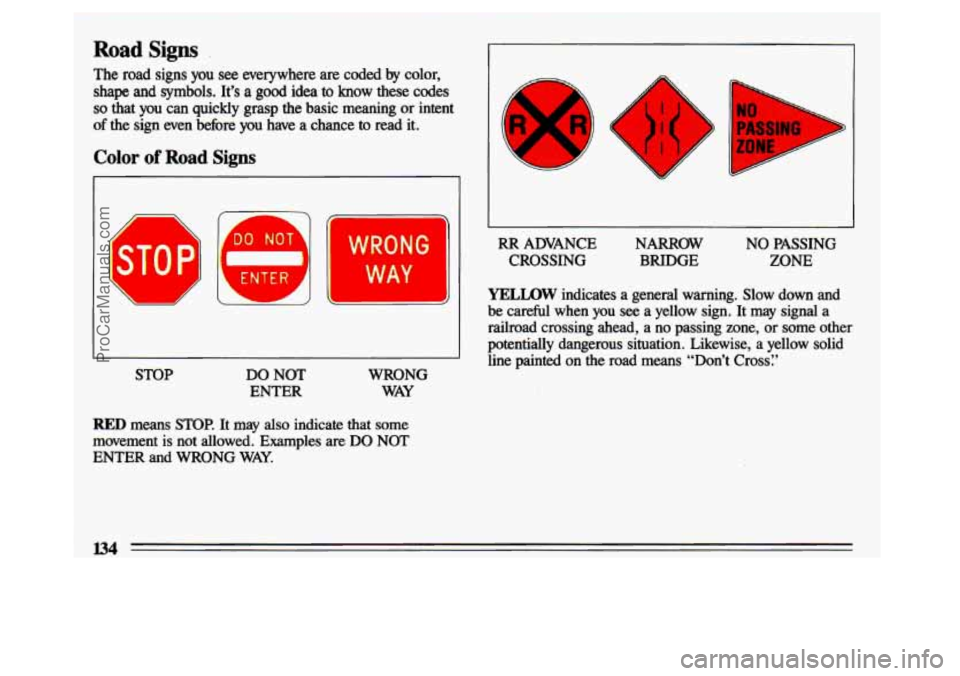
Road Signs
The road signs you see everywhere are coded by color,
shape and symbols. It’s a good idea to know these codes
so that you can quickly grasp the basic meaning or intent
of the sign even behre you have a chance to read it.
Color of Road Signs
ETOF
1
A
-
Bo NOT‘ WRONG
WAY
STOP DO NOT WRONG
ENTER WAY
1
L
RR ADVANCE
CROSSING NARROW
BRIDGE NO PASSING
ZONE
YELLOW indicates a general warning. Slow down and
be careful when
you see a yellow sign. It may signal a
railroad crossing ahead, a no passing zone, or some other
potentially dangerous situation. Likewise, a yellow solid
line painted on the road
means “Don’t Cross:’
RED means STOP. It may also indicate that some
movement is not allowed. Examples are
DO NOT
ENTER
and WRONG WAY.
ProCarManuals.com
Page 137 of 324
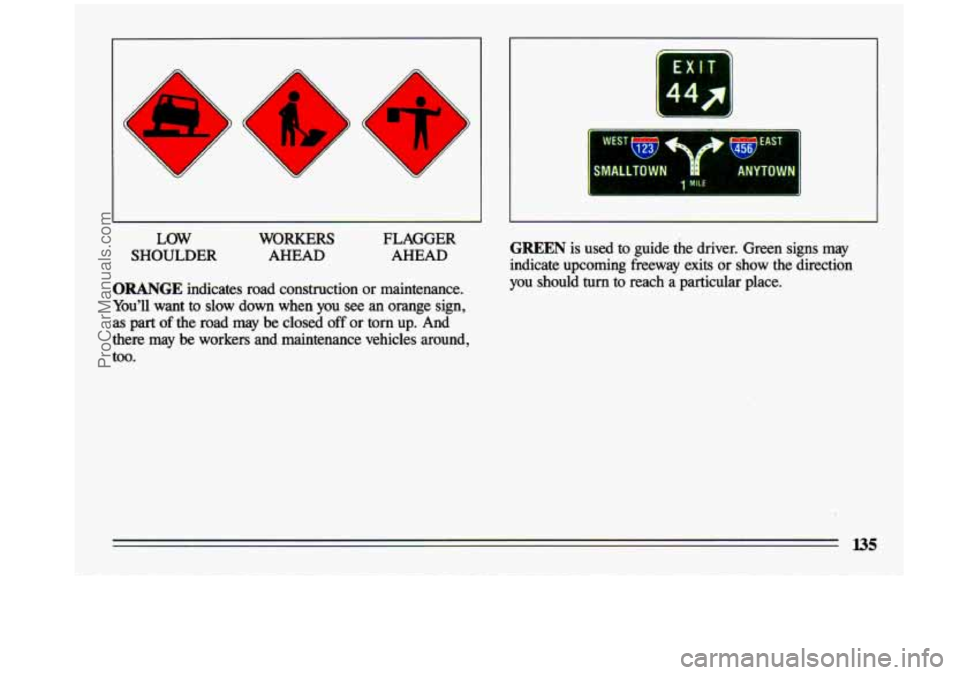
A
LOW
SHOULDER
WORKERS
AHEAD
FLAGGER
AHEAD
ORANGE indicates road construction or maintenance.
You'll want
to slow down when you see an orange sign,
as part of the road may be closed off or torn up. And
there may be workers and maintenance vehicles around,
too.
GREEN is used to guide the driver. Green signs may
indicate upcoming freeway exits or
show the direction
you should
turn to reach a particular place.
ProCarManuals.com
Page 138 of 324
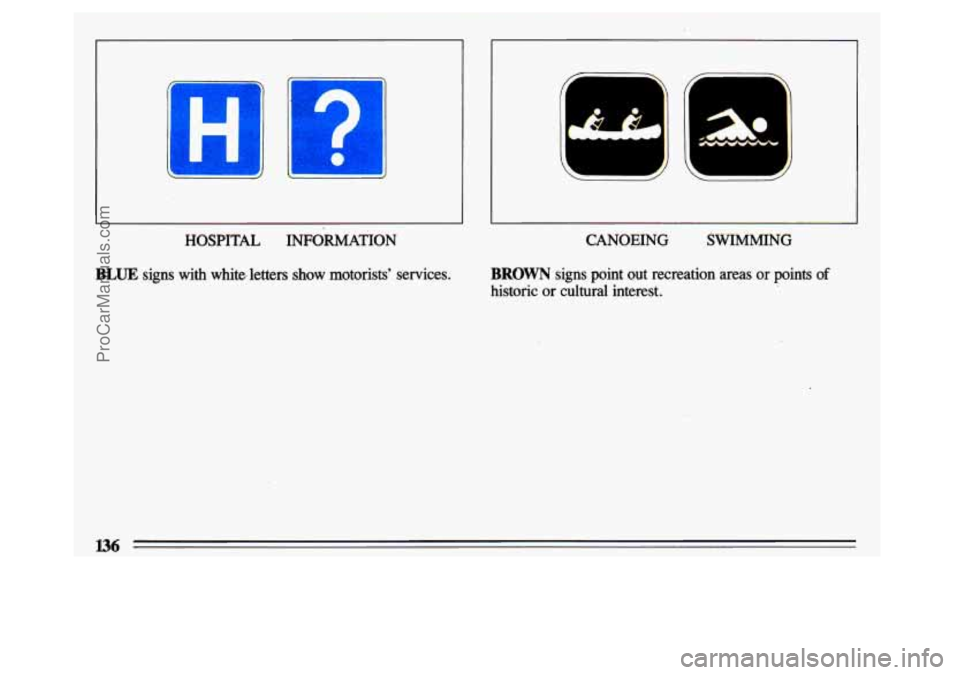
H
HOSPITAL INFORMATION
BLUE signs with white. letters show motorists’ services.
n
II
L
CANOEING SWIMMING
BROWN signs point out recreation areas or points of
historic or cultural interest.
ProCarManuals.com
Page 139 of 324
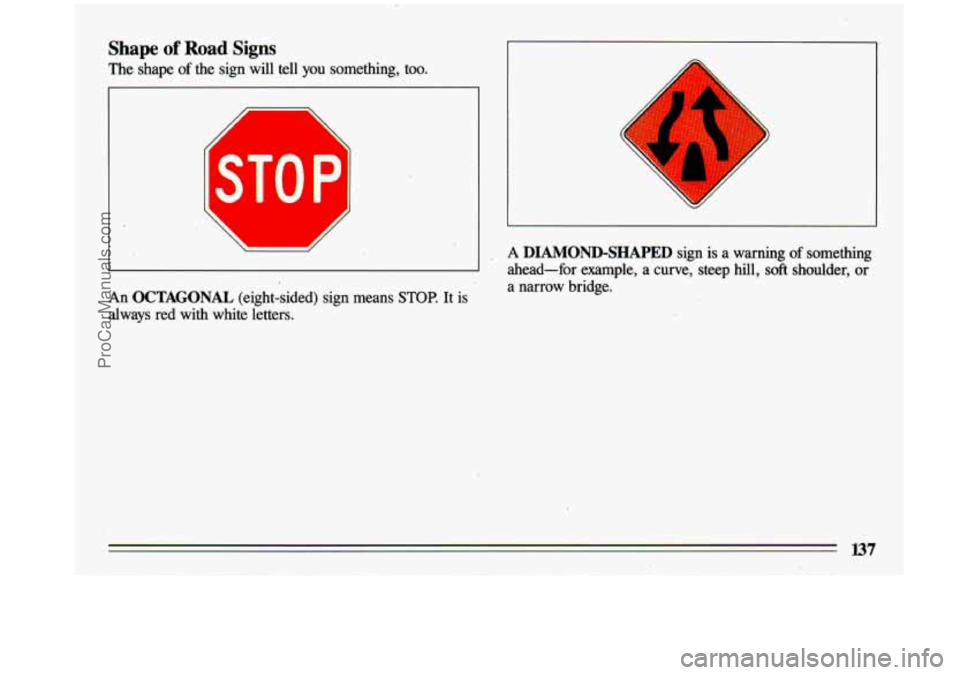
Shape of Road Signs
The shape of the sign will tell you something, too.
x
An OCTAGONAL (eight-sided) sign means STOP. It is
always red with white letters.
r
-
A DIAMOND-SHAPED sign is a warning of something
ahead-for example, a curve, steep hill,
soft shoulder, or
a narrow bridge.
Y
ProCarManuals.com
Page 140 of 324
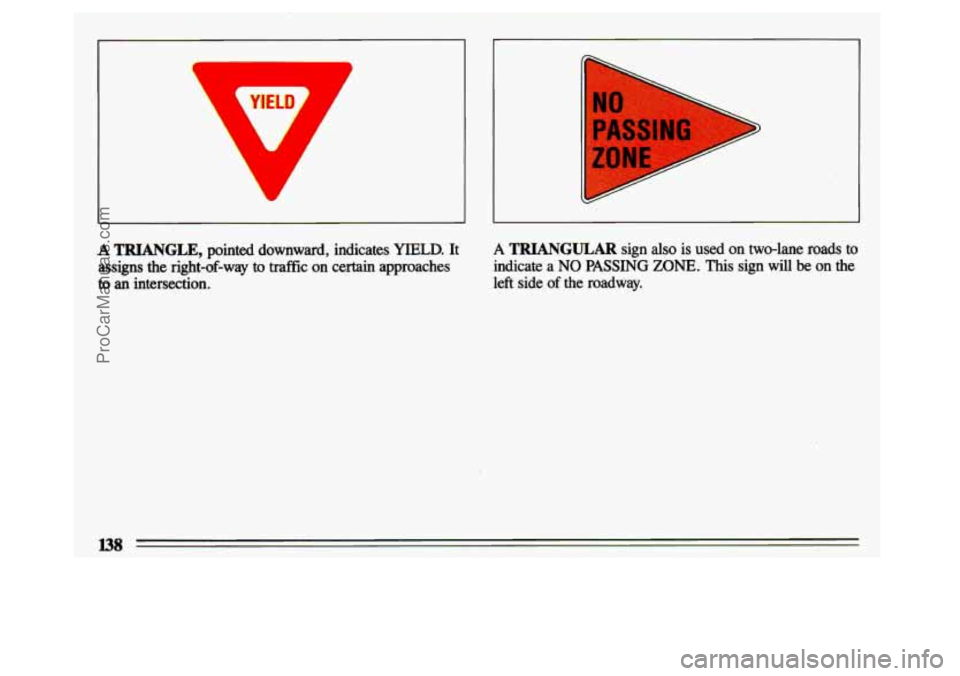
I
I
A TRIANGLE, pointed downward, indicates YIELD. It
assigns
the right-of-way to traffic on certain approaches
to an intersection.
A TRIANGULAR sign also is used on two-lane roads to
indicate a NO PASSING ZONE. This sign will be on the
left side of the roadway.
ProCarManuals.com